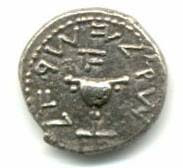It's been quite awhile since I did an ancient coin post.
Next in the series is a coin of the Roman Emperor Probus.
Marcus Aurelius Probus was emperor of Rome from 276-282 AD. As typical for many of the later Roman emperors, he wasn't born in Rome but instead in the city of Sirmium a city in Roman Pannonia, located in what is northern Serbia and the current city of Sremska Mitrovica is located right on top of it. So much on top of it in fact that right beneath the city center is the only known unexcavated Roman hippodrome, a huge building 150 meters wide by 450 meters in length. Unexcavated to this day as they'd have to rip up much of the existing city center to get to it. Sirmium was a very important roman city and made some major cultural contributions to Roman life and indeed nine emperors were born there and many others born near or were proclaimed emperor there.
An emperor in this period needed to display military prowess, and there was no better way to show those abilities than beating back a Germanic tribe or two from the Roman Empire's limes.
The reverse: Victoria Germ. Two captives seated at the foot of a trophy. RAA in exerge.
The Obverse: Probus P F AVG. The emperor's radiate and cuirassed bust facing right.
Sear 3375.
While the coin proclaimed victory over the Germans, and Probus did win many battles against them, the reality of the overall strategic situation was quite different. Under Probus, while there were considerable military victories, the Romans began withdrawing from their fortifications along the Limes Germaicus and abandoned the Agri Decumates area of the Roman province of Germania Superior and retreated to move defensible positions along the Rhine and the Danube rivers.
Probus also worked on revitalizing the Roman economy but came to an early end. In 282 AD at Sirmium, the town of his birth, he was murdered by a bunch of mutinous soldiers who were angry at having been ordered to do construction on public works rather than military duties.
Inflation in the Roman Empire in this period has reduced the Antoninianus to a silver-washed piece of bronze. On this coin, while it weighs 3.92 grams, you can see the bronze coin through the areas where the silver plating has worn away over time and the weight is bronze not silver.
There's also an interesting factoid about some of the coins of Probus. He, or his mint-masters, liked to throw single letters of the word AEQVITI, or equity, on coins.
In the case of this coin, there's an added A found in the mint-mark. The RA of the mark stands for Rome (R), first workshop (A), so we know this coin was minted at Rome itself. The extra A is for the beginning of the word AEQVITI.
Interestingly enough these extra initials only appear on coins struck at the Rome or Ticium mints (mint-mark XXI) and none of the other mints operating during that period. Get enough coins of Probus from Rome and Ticium, and you can gather the extra letters, which are often found in the legend or on the field of the coin and spell AEQVITI at your leisure and feel very equitable while doing so. Why these two mints put that code in the series of coins is unexplained as is why it was limited to only those two mints and what the point was of adding them to the series of coins.
A nice coin commemorating a Roman victory while holding part of a hidden codeword and thereby presenting an interesting lost mystery to history.



No comments:
Post a Comment